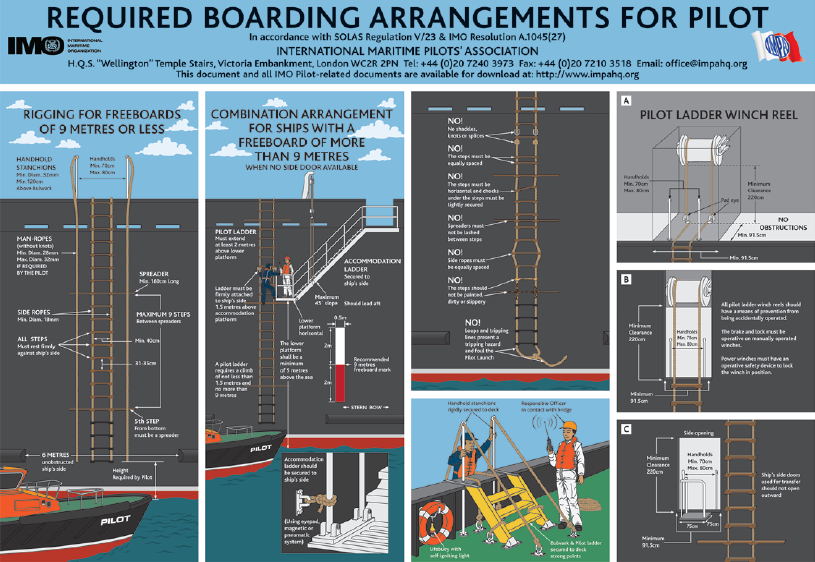LP 008/2017 Pilot transfers – still a risky business
IMPA’s safety campaign draws attention to shipowners’ responsibility to provide compliant pilot ladder arrangements and to ensure that the transfer process is undertaken in line with SOLAS.
Safe pilot transfers is a partnership between the pilots and the vessels being served. Whenever a pilot embarks or disembarks from a ship by ladder, they entrust their safety to the pilot transfer arrangements provided by the ship. Recognising the hazardous nature of pilot transfers, the IMO introduced measures through SOLAS Regulation V/23 in July 2012 to improve the safety of pilot transfer arrangements provided by vessels, see our Gard Alert of 21 June 2012. However, more than four years after the regulatory changes entered into force, results from a safety campaign carried out by the International Maritime Pilots' Association (IMPA) show little sign of improvement. Defect boarding arrangements and unsafe rigging of pilot ladders remain a concern to pilots.
Safety campaign results
IMPA’s safety campaign was carried out in the period 1 - 14 October 2016. Its purpose was to investigate the standard of pilot ladders and associated equipment and monitor compliance with SOLAS. In its campaign summary report, which was submitted to the IMO in November 2016, the IMPA states that:
· the overall non-compliance level of inspected pilot transfer arrangements was 17.8 per cent (up from 13.5 per cent in 2010 and 16.5 percent in 2007);
· bulk carriers, fishing vessels and general cargo vessels are among the vessel types contributing the most to the non-compliances;
· the main defect types resulting in non-compliances are “defect pilot ladders”, e.g. ladders not resting against ship’s hull and “safety equipment defects”, e.g. missing lifebuoys with self-igniting light; and
· the deteriorating standard of seamanship is of concern, resulting in ladders being improperly secured.
The safety campaign results seem to be confirmed by data published by Port State Control (PSC) authorities. In 2015 the Australian Maritime Safety Authority (AMSA) in its Marine Notice 2015/19reported a growing concern over the use of non-compliant or poorly configured pilot ladders by vessels calling at Australian ports. Also, a review of Paris MOU inspection results for 2014, 2015 and to November 2016 provides no evidence that the number of deficiencies related to “Pilot ladders and hoist/pilot transfer arrangements” is declining.
Shipowners’ and Masters’ responsibilities
Members and clients are reminded of their responsibility to supply conforming pilot ladders and ship-borne fittings to all their vessels and to ensure that vessels’ crew members involved in the transfer operations receive the necessary training. A full understanding of the risks involved and the requirements in force is essential in order to prevent accidents during pilot transfers.
SOLAS Regulation V/23 sets out the principal requirements for the rigging of pilot ladders while further detailed technical specification for pilot ladders can be found in IMO Resolution A.1045(27). Members and clients are also referred to the “Shipping Industry Guidance on Pilot Transfer Arrangements” published by the IMPA and ICS in 2012 as well as to the IMPA poster “Required Boarding Arrangements for Pilot”. AMSA’s information sheet “Using Pilot Ladders” could also be consulted for advice.
However, compliance with the referenced standards does not in itself assure safety. The Master or responsible deck watchkeeper of the vessel providing the pilot ladder should therefore assess whether supplementary measures, such as the provision of lifejackets, harnesses, lifelines and lifebuoys should be put in place to assure the safety of personnel. As delays may result from the need to change an improperly rigged, inadequately maintained or poorly positioned pilot ladder, it is important that Masters and deck watchkeepers confirm with the pilotage provider the exact requirements for rigging the ladder before the vessel arrives at the agreed pilot boarding place.

